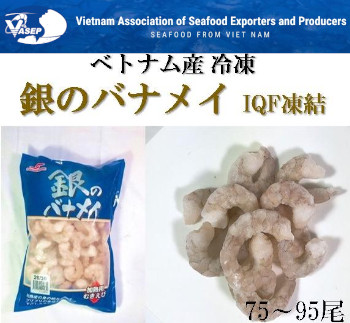|

Image: Stockfile FIS
Shrimp Imports: Weak Yen Reduces Purchasing Power
 JAPAN
JAPAN
Tuesday, May 14, 2024, 07:20 (GMT + 9)
In the first quarter of 2024, Vietnamese shrimp exports to Japan reached 103 million USD, down 2% over the same period. After increasing by 30% in January, shrimp exports to Japan decreased by 21% and 10% in February and March, respectively.

Source Stockfile FIS -->
In the first quarter of 2024, in the structure of shrimp products exported to Japan, whiteleg shrimp accounted for 69%, other types of shrimp accounted for 16%, and the remainder was black tiger shrimp. Exports of Vietnamese whiteleg shrimp products to Japan in the first quarter of this year recorded an increase in both fresh/frozen products and processed products. For black tiger shrimp, only processed black tiger shrimp recorded an increase, while fresh/frozen black tiger shrimp products decreased.
In the first quarter of 2024, the average price of Vietnam's frozen whiteleg shrimp exports to Japan ranged from 9-9.2 USD/kg. The average price of frozen black tiger shrimp exported to Japan ranges from 12.6-14.1 USD/kg. The average export price of black tiger shrimp and whiteleg shrimp is still down over the same period but has increased compared to the last months of 2023.
.jpg) <-- Source Stockfile FIS <-- Source Stockfile FIS
In the US and EU, simply processed shrimp from India and Ecuador at cheap prices have an advantage over Vietnam. Japanese consumers require products to be delicious, nutritious, beautiful, meticulously processed, and suitable for Vietnam's processing level and capacity. Popular shrimp products from Vietnam exported to Japan such as breaded shrimp, stretched shrimp, fried shrimp, sushi shrimp... Vietnamese shrimp still maintains a good competitive advantage in this market.
Japan increased shrimp purchases from Ecuador
Japanese shrimp importers are likely to buy more whiteleg shrimp farmed in Ecuador and India this year after the US imposed preliminary anti-subsidy duties on the country's three main supplier countries. Japan does not apply CVD tax on shrimp.
.jpg) Source Stockfile FIS --> Source Stockfile FIS -->
Japan's imports of warm-water shrimp from Ecuador have increased 4.5-fold over the past five years to 7,034 tons in 2023, a 7% increase, while imports from Indonesia and Thailand decreased by 7% and 17%, respectively, compared to last year. The Japanese are currently buying shelled, headless whiteleg shrimp from Ecuador for 5.80 USD/kg, size 31-40.
The Japanese shrimp market has shrunk over the past decade, but the country remains one of the world's largest shrimp consumers, after China, the US and the EU. Japan's shrimp imports, both coldwater and warmwater shrimp combined, will total 200,000 tons in 2023, hitting a 40-year low.
.jpg) <-- Source Stockfile FIS <-- Source Stockfile FIS
According to data from Japan's Ministry of Internal Affairs, households with two or more people spent an average of JPY 2,075 on shrimp in 2023, unchanged from a year earlier.
The devaluation of the yen affects import activities
The Japanese yen devaluation to a 34-year low is also a factor that makes Japan's import activities and purchasing power of seafood, including shrimp, more cautious.
The yen was at 160 yen per dollar at the end of April this year due to weak liquidity during the holiday season in Japan. The yen also fell to a record low of 171 yen/EUR.
According to feedback from businesses exporting Vietnamese shrimp to the Japanese market, there is currently a big problem due to Japan's "too strict" regulations compared to many countries regarding the acceptance threshold of antibiotic criteria. Doxycycline in seafood products imported into Japan. This is causing great difficulties and disadvantages for seafood, including Vietnamese shrimp exported to Japan, because this antibiotic is still allowed to be used in aquaculture in Vietnam. VASEP has sent a written request to the Ministry of Agriculture and Rural Development so that the Ministry can consult with Japan's Chinese authorities so that the Japanese side can issue regulations on the maximum allowable limit (MRL) for the antibiotic Doxycycline equal to the level of the Japanese government. Other countries like EU, China, New Zealand are in control.
Author: Kim Thu | Vasep (Translated from the original in Vietnamese)

[email protected]
www.seafood.media
|



